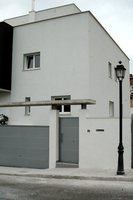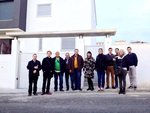Insulation and temperature profile in an extreme European climate
In 2011 our customer Francisco M. (Paco) built his home with Styro Stones in Granada in Spain. Due to personal reasons his move into his house was delayed for 2 years. In the meantime he compiled a study about his house highlighting the extraordinary properties of a well built passive house.Granada is reknowned for its extreme temperature variations (2° to 37° within 2 weeks). It lies at the foot of the Sierra Nevada - Snow Mountains - at an altitude of 730 m. Paco's study shows the massively reduced impact of the outer temperatures to the interior of his house.
To test the performance and efficiency of his house, Paco measured and recorded the internal and external variations in temperature of his home.
At the end of this page the complete study is available to download.
Temperature profile of 22. February
Due to the excellent insulation values of the completed StyroStone shell, there is a constant comfortable climate inside the house. During the winter months, heat produced by the occupants ie. body heat and daily use of electrical appliances such as lighting, TV etc. is sufficient to generate a comfortable cosy living atmosphere.
blue: Temperature outside
red: Temperature in basement
white: Temperature 1st floor
green: Temperature 2 floor
From 22. February until 8. March
Basically, it is easier to keep a house warm, than cool. This is due to the warmth that is still produced by the inhabitants and the electrical devices. However the requirement for Air Conditioning -AC- can be and is reduced dramatically.
Visit of the local council of architects
On 17.12.13 the local council of architects came to review the passive house built by Paco and to learn from his experience. Incidentally, the first passive house in Spain was built in 2000 using Styro Stones. Interest for this quality of housing is increasing rapidly in Spain and other Mediterranean countries. Local governments are now more aware that they need to reduce CO² emissions which are harmful to the ozone layer. In hotter climates AC significantly contributes to these emissions.
|
DOWNLOAD |




